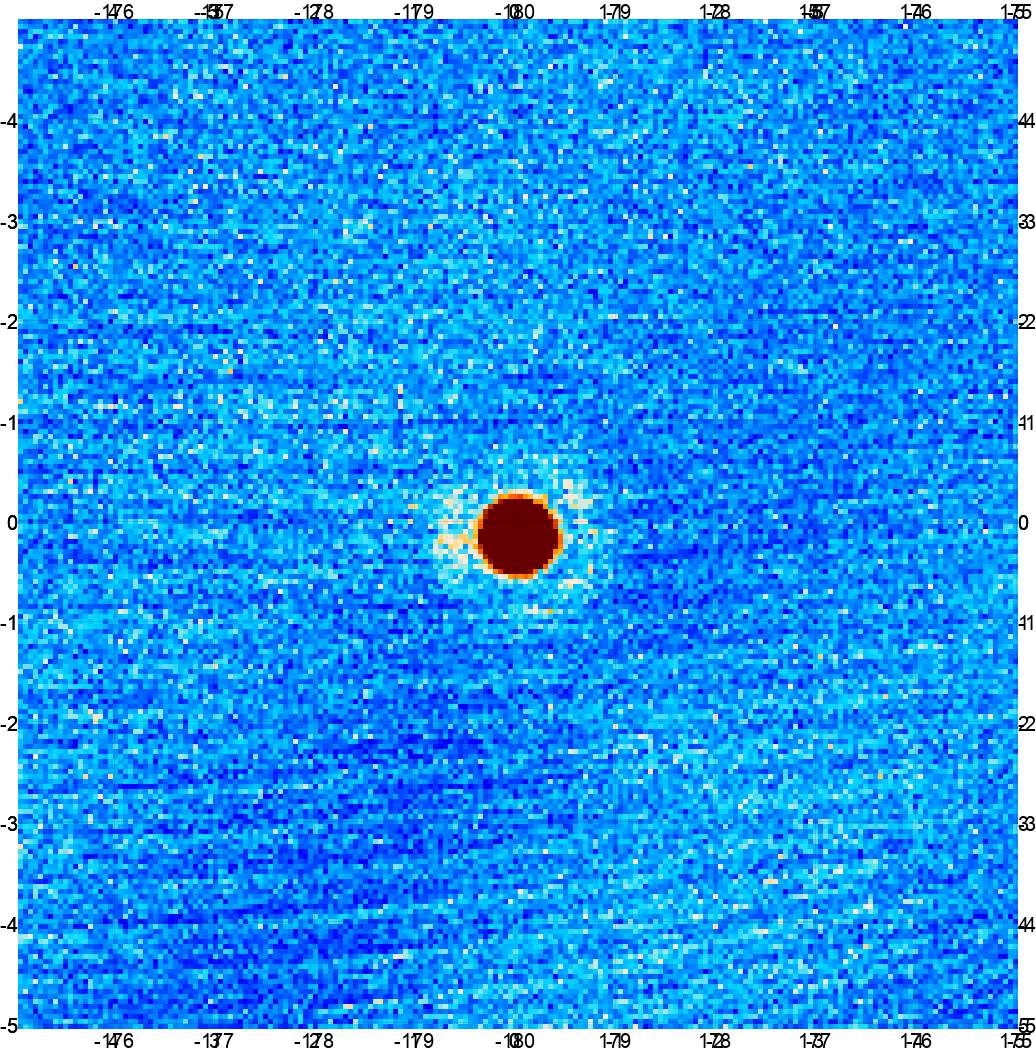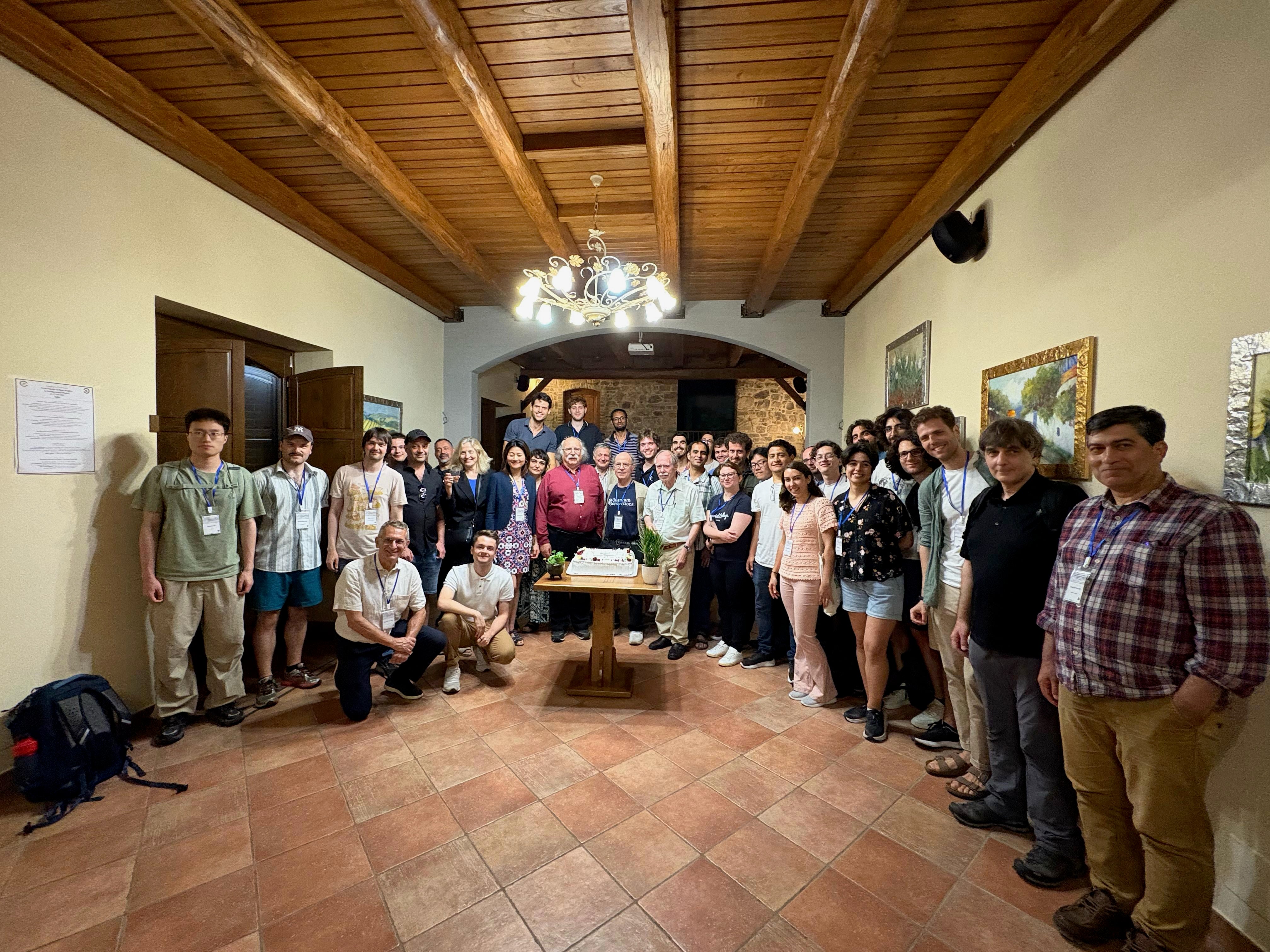Postcards from the Field: First Light for a New High-Desert Telescope
Scientists at the Simons Observatory in Chile, including Katie Freese and Nick Galitzki, probe the cosmic microwave background for clues about the history of the early universe.
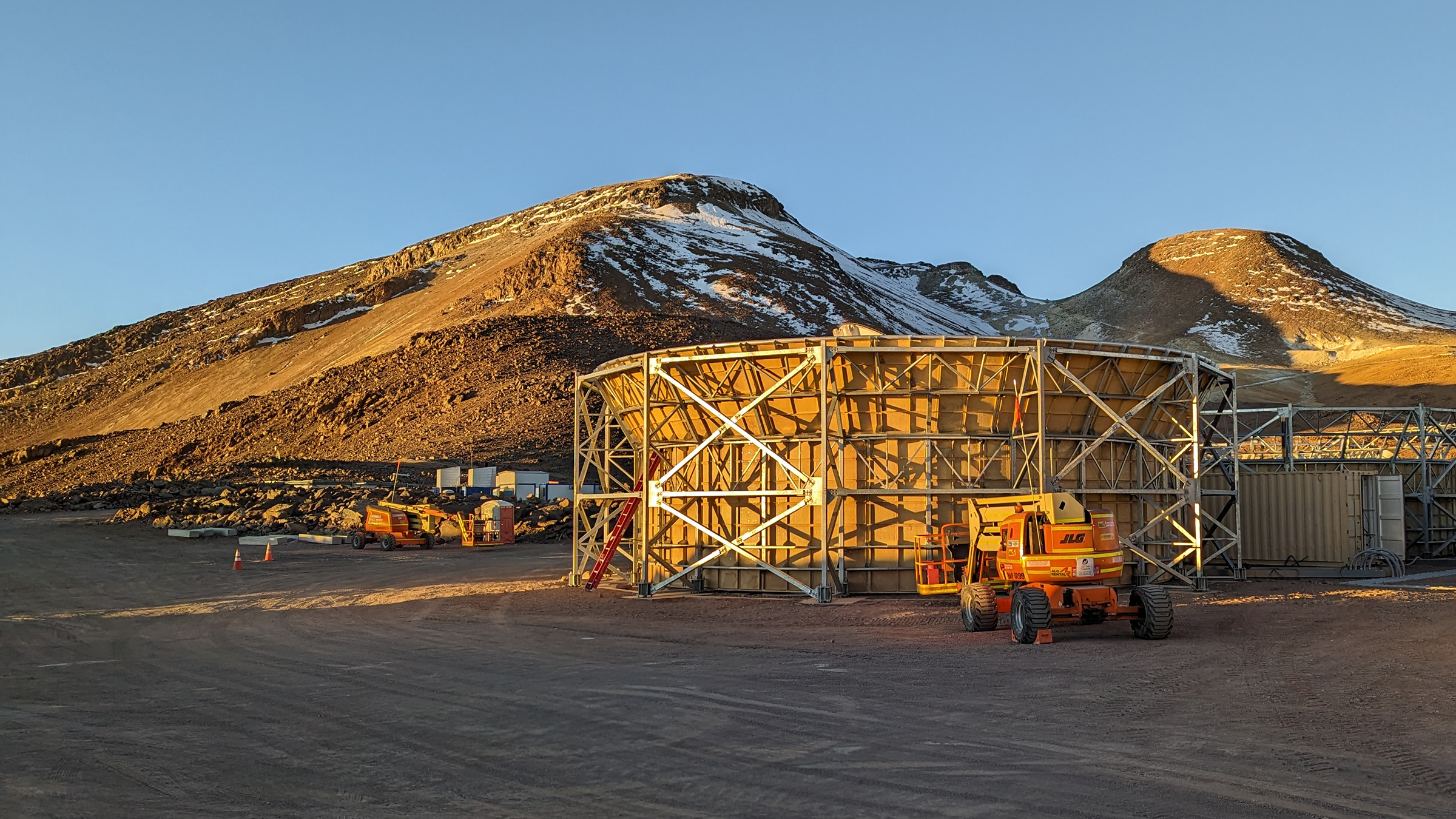
The enclosure for the B-Rock instrument blocks microwave radiation from the surrounding area. Credit: Nick Galitzki
Thanks to the dry air and high altitude, the Atacama Desert in Chile is one of the premiere locations in the world for astronomy. It’s also a place of rugged beauty.
“It’s this wild landscape with giant salt flats and volcanoes and hot springs,” said University of Texas at Austin physicist Nick Galitzki. “There are even flamingos up there. It’s just a beautiful, surreal location.”
Here, on the edge of an extinct volcano, at 17,000 feet elevation, a large international consortium that includes UT is building the Simons Observatory. The effort is focused on studying a signal produced just after the Big Bang that permeates the universe, called the cosmic microwave background (CMB). Data collected by various instruments in the observatory could tell scientists a lot about what happened in the early universe, including what happened in the first seconds of the universe and how the structures that seeded the first stars and galaxies were formed.
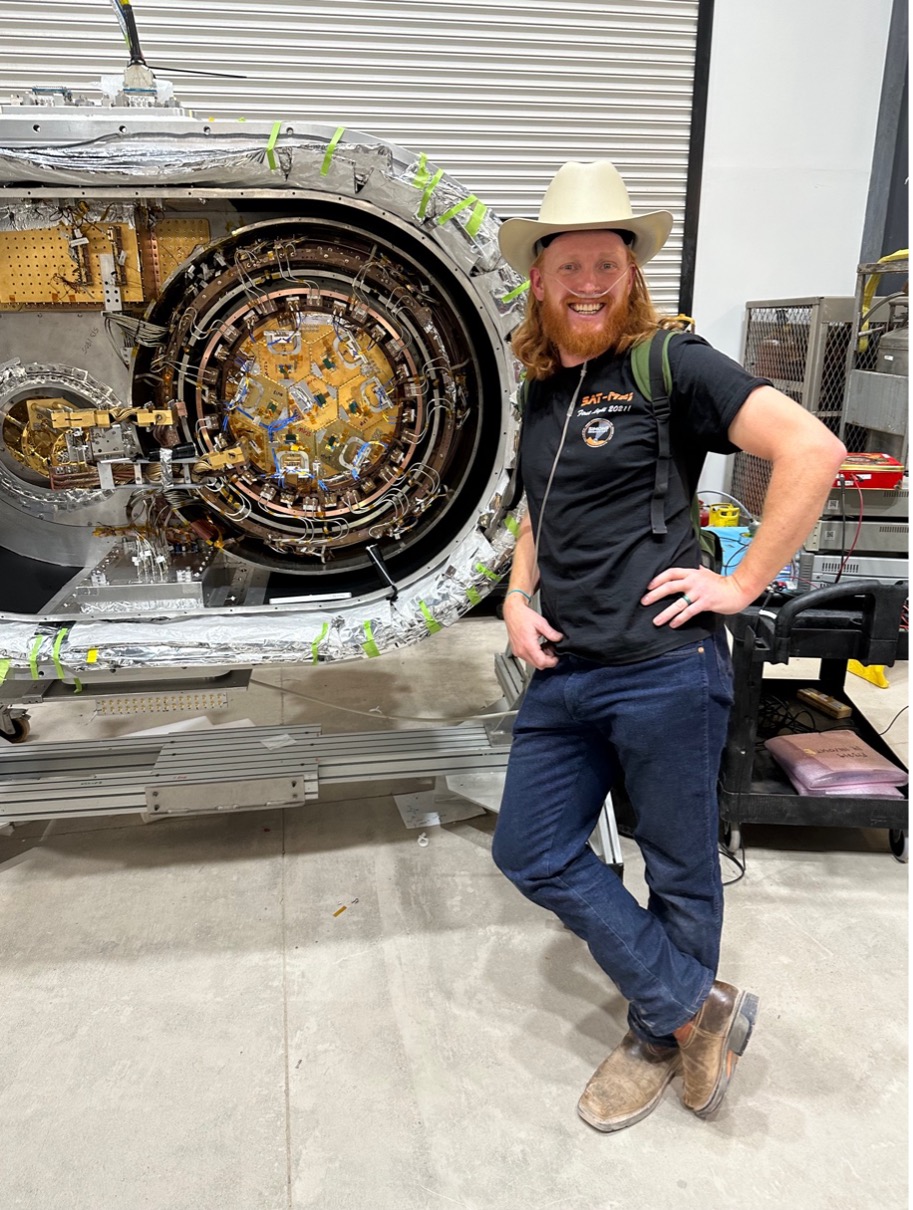
Galitzki designed and built, along with collaborators, one of the small-aperture microwave telescopes (SATs), affectionately named B-Rock. Credit: Michael Randall
Galitzki, who joined UT as an assistant professor in 2022, led the design and construction of one of the Simon Observatory small aperture telescopes (SATs), named B-Rock that saw “first light” when it observed the planet Jupiter late last year. Over the next five years, Galitzki and his collaborators will use this combination microwave telescope and camera to search for the fingerprint left behind by a proposed rapid expansion of the early universe known as cosmic inflation.
The first image of the planet Jupiter from the first of three new refracting 1-meter aperture microwave telescopes at the Simon Observatory in Chile.
Katie Freese, a theoretical physicist at UT and director of both the Weinberg Institute and Texas Center for Cosmology and Astroparticle Physics, has been a member of the Simons Observatory for many years and advocated for hiring Galitzki at UT and securing funding from the university to officially join the observatory. She and Galitzki have also recruited two postdoctoral researchers, Elle Shaw and Vivian Sabla, to work on the project.
Freese is among the scientists who have predicted that the inflationary period in the early universe generated gravitational waves that would have left their mark on the CMB by creating a pattern called B-mode polarization. Despite decades of efforts with instruments of higher and higher sensitivity, astronomers have yet to detect it. Part of her motivation for participating in the Simons Observatory sprang from its ability to hunt for that fingerprint.
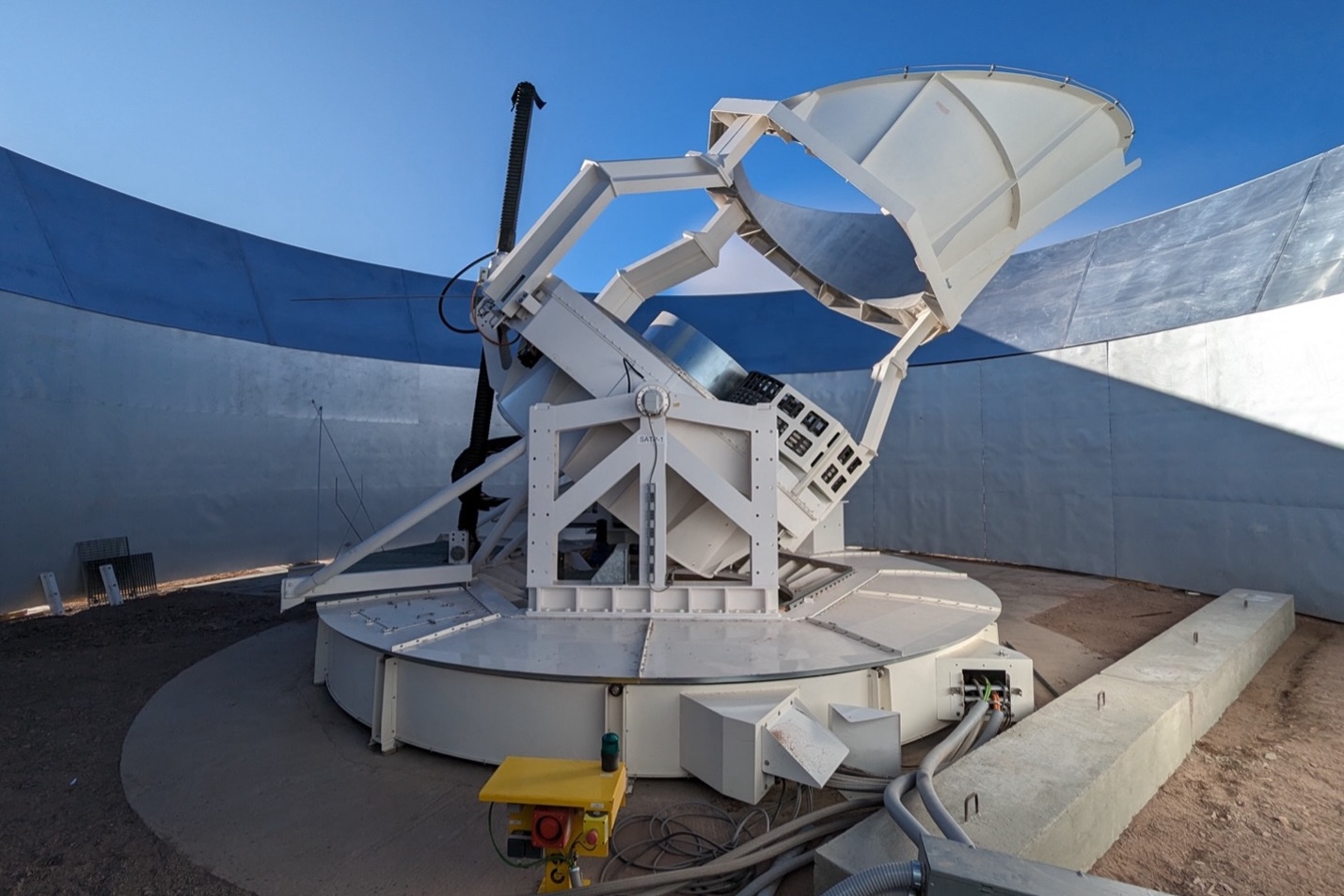
This pointing platform will house the B-Rock instrument. The enclosing wall blocks microwave radiation from the surrounding area. Credit: Nick Galitzki
Galitzki named B-Rock for both the B-mode polarization it will probe for—and also as an homage to Beastie Boys member Ad-Rock.
“If we can see the signal, that would be the smoking gun,” said Galitzki. “But if we don’t find it, that rules out the most straightforward classes of inflationary theory. It would be much more difficult to explain the universe as we see it.”
Freese has skin in this particular game—she has developed one of several competing models for inflation.
“I have a very personal interest,” she said. “The amplitude of the polarization tells you which inflation model is right.”
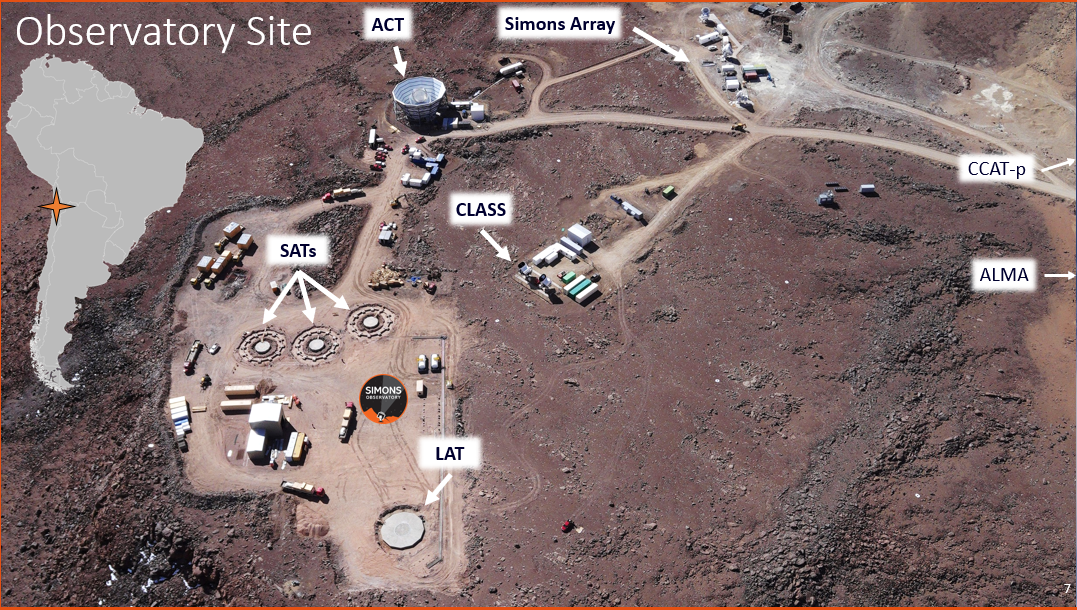
The Simons Observatory, currently under construction in the Parque Astronómico Atacama, is adjacent to existing facilities, including the Simons Array and ALMA. Credit: Nick Galitzki
B-Rock will be the most sensitive instrument of its kind to date. To detect the faint cosmic inflation fingerprint, it will stare at about 10% of the sky for several years. Galitzki compared its intense gaze to “drilling a hole in the sky.”
If they do detect this fingerprint, its properties could also help explain how variations in the CMB might have seeded structure in the early universe, leading to the first stars and galaxies.
The Simons Observatory—a collaboration between the Simons Foundation, five founding universities and collaborating institutions across the globe—is located in the Parque Astronómico Atacama, which is home to several major astronomical observatories. UT is also a major partner in another project in Chile under construction: the Giant Magellan Telescope at Las Campanas Observatory several hundred miles southwest of the Simons Observatory. When complete, it will be the most powerful optical infrared ground-based telescope in the world.
At 17,000 feet elevation, the Simons Observatory is above half Earth’s atmosphere, which is great for astronomy, but less so for breathing. So the scientists wear backpacks with battery-powered oxygen concentrators that feed supplemental oxygen through a nose tube.
“And then our safety guys run around and grab your finger and take a pulse oximeter reading to see what your oxygen levels are at,” Galitzki said. “If you’re too low, you have to up your oxygen levels, calm down and take some deep breaths. It keeps us hopefully making good decisions.”

Galitzki and his team pose with B-Rock, one of three “CMBeastie Boys” instruments in some phase of construction at the Simons Observatory. Credit: Michael Randall

